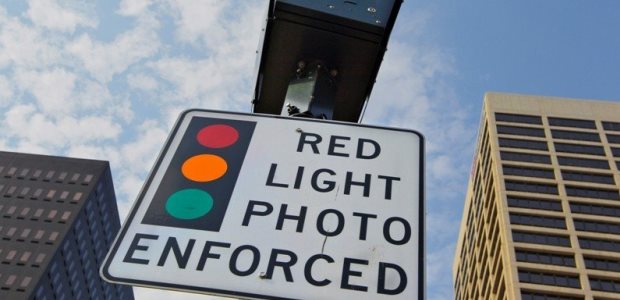
Safety Groups Release Red Light Camera Checklist
Deaths from red light-running crashes in the United States have been rising since 2012, and the number of communities with the cameras has been falling.
Trying to encourage cities and localities to use automated enforcement, four national safety organizations have created a red light camera checklist for local policymakers, law enforcement agencies, and transportation officials. Released July 24 by AAA, Advocates for Highway and Auto Safety, the Insurance Institute for Highway Safety, and the National Safety Council, the checklist provides instructions for planning, implementing, and evaluating red light camera programs, including steps to help communities build and maintain public support, such as with sustained public education campaigns focused on improving safety.
"We developed the guidelines to help communities avoid the problems that have undermined programs in the past," said IIHS President David Harkey. "We know turning off cameras results in more crashes, injuries, and deaths, so it's important that camera programs succeed."
According to an IIHS analysis, more than 800 people died in U.S. crashes involving red light running during 2016 (the most recent year for which data are available), which represents an increase of 17 percent since 2012. The increase came as fewer U.S. communities are using red light cameras to enforce the law and reduce crashes.
"Red light cameras can play a role in improving traffic safety for all road users and should be placed where they can benefit a community, like at intersections with high numbers of fatalities," said Jill Ingrassia, AAA's managing director of government relations and traffic safety advocacy. "When properly implemented, red light cameras can help save lives and can serve to supplement law enforcement efforts, rather than generate revenue for governments. This new set of guidelines is an excellent starting point in ensuring adequate safeguards are put in place to maintain the public's trust."
Additionally, more than half of the people killed in red light-running crashes are pedestrians, bicyclists, and people in other vehicles hit by the red light runners. "Red light cameras are proven lifesavers," said Cathy Chase, president of Advocates for Highway and Auto Safety. "As states and cities consider ways to reduce motor vehicle crash deaths and injuries, the new red light camera checklist will be a vital tool to reinvigorate waning programs, restart discontinued programs, and revolutionize new, successful programs."
"Intersections are some of the most dangerous places on our roadways," added Deborah A.P. Hersman, president and CEO of the National Safety Council. "Automated enforcement technology saves lives, and this checklist helps put communities on a road to zero deaths."
As of July 2018, 421 communities had red light camera programs, down from 533 that had a program at any time during 2012. Although new camera programs continue to be added, the total number of camera programs fell because more programs were halted than were initiated. Commonly cited reasons for turning off cameras include a reduction in camera citations, difficulty sustaining the financial viability of the program, and community opposition.
IIHS reported these numbers of deaths in U.S. red light-running crashes in recent years:
- 2010: 681
- 2011: 719
- 2012: 696
- 2013: 704
- 2014: 7112015: 7862016: 811
Programs that focus on safety and transparency are successful, according to the groups. They say including stakeholders in the planning phase, establishing a strong system for data collection and monitoring, and targeting only the violations with the greatest safety consequences are steps that will build public confidence in the programs, and that, long term, communities need to plan for regular program evaluation based on crash and infraction data.